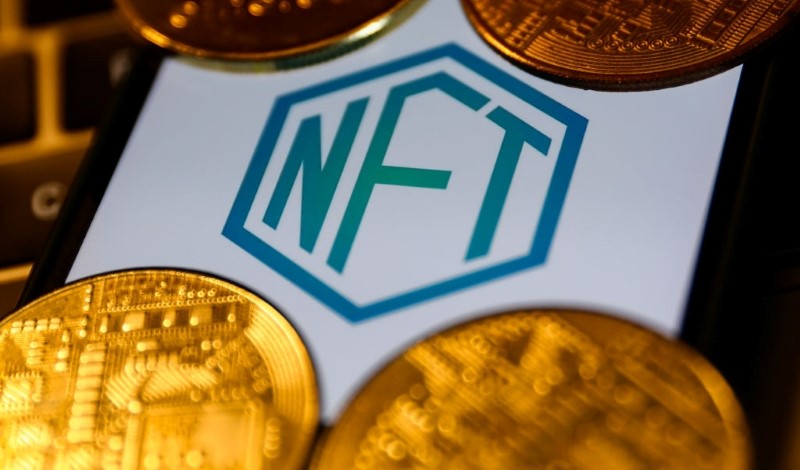
Scholars evaluate efforts to regulate cryptocurrencies, NFTs, and other digital assets.
Artist Mark Winkelmann—also famously known as Beeple—created a piece of artwork that sold for $69.3 million in 2021. But this coveted work was not a painting, sculpture, or any other piece of tangible art—it was a non-fungible token (NFT).
An NFT is a digital token that represents ownership to an asset, such as music, video clips, or artwork. NFTs and other digital tokens are created through the process of recording a unique data entry on a blockchain, which is a type of distributed public database.
NFTs are just one type of digital asset, which is any representation of value that is recorded on a blockchain or other distributed ledger. In addition to NFTs, other common digital assets include cryptocurrencies, such as Bitcoin or Ethereum.
The digital asset market exploded in 2021 and was estimated to be worth $3 trillion, with NFTs alone generating about $27 billion in revenue. At the end of 2022, however, the digital asset market suffered a sharp fall and lost over $2 trillion in value.
This sudden downturn in the market was partly caused by the widely publicized collapse of FTX, one of the world’s largest cryptocurrency exchanges. After FTX filed for bankruptcy, the company was exposed for misusing investor funds, which significantly decreased the appeal of digital assets to investors.
Such fraud also led policymakers to call for greater regulatory efforts to protect consumers in this volatile market. But because of digital assets’ complex, novel qualities, experts have expressed uncertainty as to how this evolving technology should be regulated. While some policymakers have argued that digital assets should be restrained under the existing, comprehensive regulatory framework for securities, the U.S. Securities and Exchange Commission (SEC) has been reluctant to classify all digital assets as securities.
Other policymakers have argued that some digital assets are subject to regulation by the Commodity Futures Trading Commission (CFTC), which regulates derivatives markets. In 2019, the Chairman of the CFTC declared that Ethereum fell within CFTC jurisdiction.
This week’s Saturday Seminar examines scholarship evaluating proposed regulatory frameworks for digital assets.
- Policymakers may struggle to regulate cryptocurrencies partly because many cryptocurrencies do not have a centralized entity that federal agencies can easily supervise, suggests Brett Hemenway Falk of the University of Pennsylvania and Sarah Hammer of the Wharton School of the University of Pennsylvania in a working paper to be published in the University of Pennsylvania Journal of Business Law. Many cryptocurrencies are not backed by U.S. dollars, but rather by other cryptocurrencies, meaning they lack a “traditional custodian,” like a bank, that would be subject to federal regulation, explain Falk and Hammer. Despite these challenges, Falk and Hammer contend that policymakers should seek to implement uniform standards to promote consumer protection, financial stability, and technological advancement.
- In a recent article for the Georgia State University Law Review, Brian Elzweig of the University of West Florida and Lawrence J. Trautman of Prairie View A&M University discuss the SEC’s interpretation of when digital assets become a regulatable security. In SEC v. Shavers, the authors explain, the court ruled that Bitcoin constitutes money because it has the power to purchase goods and services. Consequently, they note, the SEC regulates virtual currency transactions and applies the Howey test, which determines whether a transaction qualifies as an investment contract, and thus, a security. Elzweig and Trautman hypothesize that in the future, the SEC will rely on a more flexible form of the Howey test that allows it to analyze virtual transactions on a case-by-case basis.
- In a working paper to be published in Boston College Law Review, Yuliya Guseva of Rutgers Law School and Irena Hutton of Florida State University College of Business contend that there is a turf war brewing between the two major digital asset regulators—the SEC and CFTC. Guseva and Hutton explain that, although global cryptocurrency markets generally respond to U.S. regulatory and enforcement efforts, the markets react differently depending upon the acting agency, with SEC actions garnering a more negative market reaction than CFTC actions. These reactions highlight the need for updated substantive law and regulation and a possible redistribution of oversight authority between the SEC and CFTC, contend Guseva and Hutton.
- In a forthcoming article in the American Business Law Journal, Carol R. Goforth of the University of Arkansas School of Law evaluates recent SEC actions against cryptocurrency offerings. In two cases involving token sales, SEC v. Telegram and SEC v. Kik, the SEC found violations of federal securities laws, Goforth explains. In both instances, Goforth contends, a company raised funds from sophisticated investors without any evidence of fraud or investor manipulation. Because both cases involved sophisticated investors, Goforth questions who the SEC intended to protect by regulating these token offerings. Goforth acknowledges that fraud is a valid concern in the cryptocurrency market, but she cautions against SEC intervention against legitimate crypto entrepreneurs “in the name of protecting investors who do not need the protection.”
- In an article published in the Maryland Law Review, Yuliya Guseva of Rutgers Law School proposes a regulatory framework to resolve confusion about when securities laws should be applied to digital assets. She dissects digital asset offerings into two distinct phases—the first stage involves capital fundraising to develop the asset, and the second stage involves the delivery of the assets. Guseva argues that securities laws only play a main role in the first stage, since companies are raising capital and “performing contractual obligations under investment contracts,” whereas the second stage may resemble commodity trading. By conceptualizing digital asset offerings as two distinct phases, regulators can have a better understanding of when securities laws end and commodities laws begin, Guseva contends.
- In a recent article for the Chicago Journal of International Law, Philipp Maume and Mathias Fromberger of the Technical University of Munich compare the U.S. and European Union approaches to token regulation. In the United States, the SEC considers investment and hybrid investment tokens under the “investment contract” subcategory of securities, Maume and Fromberger explain. EU classification of tokens, they note, emphasizes that tokens should be analyzed on a “case-by-case assessment,” which fails to provide a clear test for when tokens should be analyzed as securities. Unlike the EU approach, the SEC’s approach provides a predictable, reasonable framework for investors and provides investors with greater protection, Maume and Fromberger argue.



